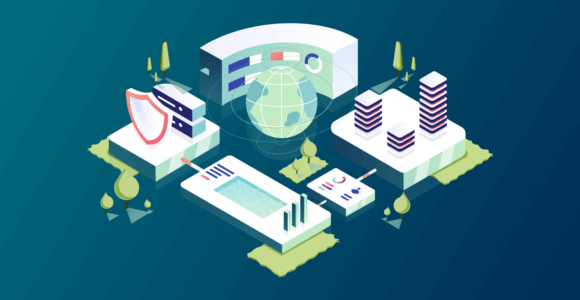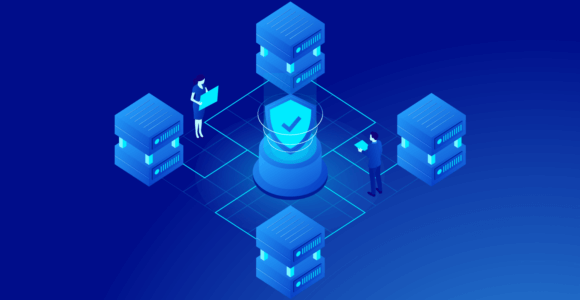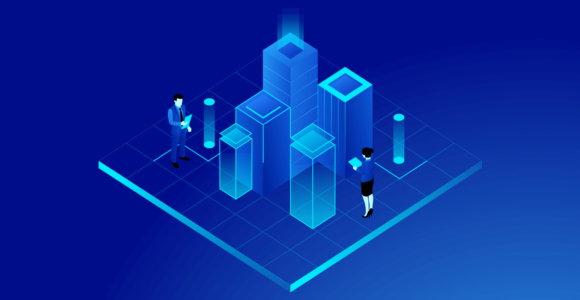Blockchain technology found its first real-world application with the launch of Bitcoin in 2009. Since then, entrepreneurs in a variety of industries have begun exploring the technology’s potential. Blockchain technology is finding its way into fields as diverse as health records management, digital identity verification, supply chain tracking, and video games. The ability of Ethereum and other blockchains to store and execute computer code has multiplied the number of use cases for this innovative technology.
What’s Past Is Prologue
As we look forward to the future of the blockchain revolution, we can learn from the history of similarly disruptive technologies.
When desktop PCs first appeared on the market in the 1970s, they found a ready market among hobbyists and enthusiasts. But this was a relatively small number of people. PCs hit the big time with the development of the first “killer app,” a spreadsheet program called VisiCalc. The software was so useful and flexible that it justified the purchase of PCs in businesses large and small. It was VisiCalc that catapulted PCs into the big time.

When IBM-compatible PCs appeared on the scene, it was Lotus 1-2-3 that justified the purchase. The PC was good technology at a fair price, but it didn’t take off until it became a requirement for running 1-2-3.
Microsoft Windows offered many innovations to PC users in the 1980s, but its future was uncertain until the release of Microsoft Office, a compelling suite of productivity tools that you couldn’t use without Windows. A few years later, Microsoft founder Bill Gates identified the internet browser as the killer app for Windows 95.
It’s reasonable to think the future of blockchain will follow the same path. The technology is a foundation much like early personal computers, the IBM PC, or Microsoft Windows. For blockchain to live up to its potential in all the markets where it can be useful, it must first become the foundation of an application or service that has broad appeal across markets – a killer app. Why is blockchain important? Because it runs an app or provides a service that people find irresistible. A killer app.
Blockchains and Killer Apps
Blockchain technology is inextricably intertwined with Bitcoin and other cryptocurrencies. Most of the people currently interacting with blockchain networks do so only because that’s how they buy and sell cryptocurrencies. For them, crypto is the blockchain’s killer app.
But most people have not yet purchased crypto, and a future in which you can make all your everyday purchases with Bitcoin or another cryptocurrency seems far away. Cryptocurrency alone is not sufficient to push blockchain to its full potential. If that’s all blockchain is good for, that’s why blockchain will fail to become a mainstream technology.

But there is more. Much more.
A compelling decentralized financial app could propel blockchain into the mainstream. Hundreds of DeFi apps are now available, with more appearing every day.
Non-fungible tokens have brought many new users to the blockchain world through games, artworks, collectibles, and investments that are implemented with NFT technology. Some of these fields are composed of millions of potential users, so one of them might turn out to be blockchain’s killer app.
The metaverse could turn out to be the gotta-have-it service that brings blockchain to the masses. Many of the metaverses currently under development use blockchain technology under the hood, if only to verify identity and represent personal belongings as NFTs.
Blockchain technology meets real needs in all of these fields, and any one of them could explode into consumer consciousness and make blockchains omnipresent. It’s hard to predict which it might be. How big is the blockchain future? It’s potentially huge.
What the future looks like
If the past tells us anything, it is that once blockchains become a necessary part of everyday life, we will stop talking about them. That’s what happens to the essential technical underpinnings of killer apps.
When Microsoft Office was introduced, everyone talked about Windows for a while. Your PC had to be Windows-compatible. You had to buy a copy of Windows. You had to make sure that your version of Windows was updated to run the latest version of Office.
And then, once Windows reached critical mass, people didn’t need to talk about it so much. Office users could take Windows for granted. Windows continued to be essential, but user focus shifted to the apps that ran on Windows, not on the technical foundation.
That’s what blockchain’s future looks like. For a while, blockchain will be at the forefront. We look for developers who can create blockchain apps. We look for services that can integrate blockchain apps with non-blockchain data or services that run on incompatible blockchains. We focus on scalability and security.
When the revolution comes, it will be because blockchain technology is a mature, stable foundation for the apps and services we want. We’ll focus on those, and we’ll stop talking so much about blockchain.
We will know that blockchain technology has achieved its success when we stop talking about it.
NOTE
This text is informative in nature and should not be considered an investment recommendation. It does not express the personal opinion of the author or service. Any investment or trading is risky, and past returns are not a guarantee of future returns. Risk only assets that you are willing to lose.




 IOS
IOS Android
Android